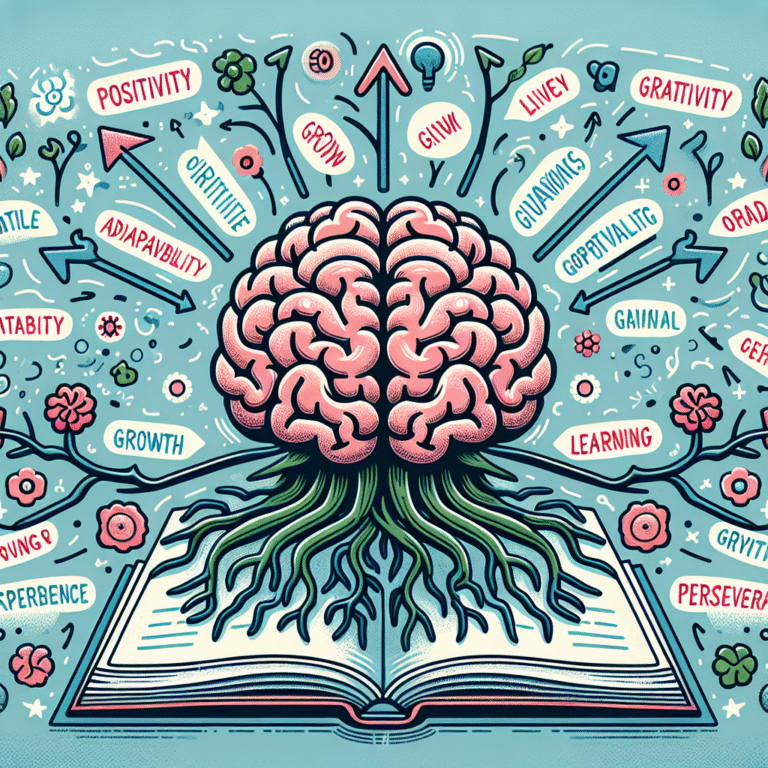
Introduction
Imagine stepping into a classroom where students light up with enthusiasm, eager to learn and challenge themselves. This vibrant environment is often influenced not solely by grades but by a powerful force: teacher expectations. Research suggests that the beliefs educators hold about their students’ potential can significantly affect motivation and achievement. In this article, we delve into Beyond Grades: The Role of Teacher Expectations in Student Motivation, offering insights and practical strategies that teachers can implement to foster a more motivating atmosphere.
Understanding Teacher Expectations
The Impact of Beliefs
At the heart of any educational setting lies the beliefs educators hold regarding their students. Rosenthal and Jacobson’s research on the "Pygmalion Effect" shows that higher expectations from teachers lead to better student outcomes. This phenomenon illustrates a vital concept: students often rise—or fall—to the expectations placed upon them.
Case Study 1: The Pygmalion Effect in Action
In a renowned study, Rosenthal and Jacobson divided a classroom into two groups based on teachers’ perceptions of potential. The students identified as "high potential" showed substantial academic improvements by the end of the year, solely because their teachers believed in them. This case study illustrates that Beyond Grades: The Role of Teacher Expectations in Student Motivation manifests in tangible academic growth.
Growth Mindset vs. Fixed Mindset
Carol Dweck’s research on growth vs. fixed mindset further reinforces this idea. If teachers convey that intelligence and ability can develop with effort, students are more likely to embrace challenges and persist in the face of setbacks. Conversely, a fixed mindset—where abilities are perceived as static—can discourage students and hinder motivation.
| Mindset Type | Definition | Impact on Students |
|---|---|---|
| Growth Mindset | Abilities can be developed | Enhanced motivation, increased resilience |
| Fixed Mindset | Abilities are static | Reduced motivation, fear of failure |
Creating an Environment of High Expectations
Communicating Belief in Students
To leverage Beyond Grades: The Role of Teacher Expectations in Student Motivation, educators must explicitly communicate their belief in each student’s potential. Simple affirmations, constructive feedback, and genuine enthusiasm can ignite student motivation.
Case Study 2: Teacher Affirmations
At a middle school in Chicago, teachers initiated a program focused on daily affirmations for every student. Teachers made it a point to celebrate small wins and understand individual learning curves. As a result, the school reported a 30% increase in student engagement, demonstrating how powerful teacher expectations can be.
Setting High Standards
Expectations should be paired with high standards. When students understand that their teachers expect them to strive for excellence, they often rise to meet these challenges. Providing opportunities for students to set personal goals can further enhance this process.
Practical Implementation
- Goal-Setting Workshops: Organize sessions where students can express their aspirations and set achievable targets.
- Continuous Feedback: Implement a regular feedback mechanism that focuses on progress rather than solely grades.
The Role of Relationships in Motivation
Building Trusting Connections
Effective teacher-student relationships are crucial for motivating students. A strong rapport creates a safe space for students, making them more willing to engage and take risks.
Case Study 3: Relationship Building
At a rural high school in Texas, a group of teachers adopted a mentoring approach, dedicating time each week to one-on-one sessions with students. Over the semester, not only did academic performance improve, but students also reported feeling more valued, which underscored the significance of positive teacher expectations.
The Influence of Social-Emotional Learning (SEL)
Incorporating social-emotional learning into the curriculum can bridge gaps in motivation. SEL fosters empathy, self-regulation, and relationship skills, empowering students to feel understood and confident in their abilities.
| SEL Component | Description | Impact on Motivation |
|---|---|---|
| Self-Awareness | Understanding emotions | Boosts confidence and resilience |
| Self-Management | Regulating behaviors | Encourages goal-setting and persistence |
| Social Awareness | Empathy for others | Enhances collaboration and support |
| Relationship Skills | Communicating effectively | Builds strong teacher-student bonds |
Real-World Applications of Teacher Expectations
Developing Inclusive Classrooms
An inclusive classroom approach can heighten the role of expectations. Students thrive when teachers recognize diverse learning styles and provide individualized support.
Case Study 4: Differentiated Instruction
In an elementary school in California, teachers adopted differentiated instruction practices, tailoring activities to meet varied learning needs. By doing so, they not only elevated academic performance but also bolstered students’ self-belief, proving the utility of high expectations across different abilities.
Culturally Responsive Teaching
Educators must also possess an understanding of cultural competencies. Recognizing and respecting cultural backgrounds can foster a deeper connection and motivate students to engage more fully.
Enhancing Teacher Expectations for Motivation
Professional Development
To maintain high expectations, teachers should engage in ongoing professional development that focuses on best practices for motivating students. Workshops exploring new strategies in communication, feedback, and relationship building can catalyze positive changes in classrooms.
Peer Collaboration
Encouraging faculty to collaborate can elevate expectations throughout the school. Sharing experiences and strategies allows educators to learn from one another and collectively uplift student motivation.
Conclusion
In conclusion, the journey of education extends Beyond Grades: The Role of Teacher Expectations in Student Motivation. By fostering high expectations, building trusting relationships, and employing effective teaching strategies, educators can significantly influence student outcomes. Teachers who recognize their critical role as motivators can lead their students to not only achieve academic success but also to develop resilience and a growth mindset.
As you reflect on your own practices, consider this: every positive belief you have about your students can spark motivation and engagement. So, let’s recommit to the powerful role we play in inspiring the next generation.
FAQs
1. How can I communicate high expectations without increasing stress in students?
Communicate high expectations alongside support and resources. Emphasize that challenges are opportunities for growth, ensuring students understand you are there to help them succeed.
2. What role does feedback play in teacher expectations?
Feedback is crucial as it guides students on their journey. Constructive criticism, paired with praise for achievements, helps students see their potential and recognize areas for improvement.
3. Can teacher expectations affect students’ self-esteem?
Absolutely. Positive expectations can boost students’ self-esteem, making them feel valued and capable. On the other hand, low expectations can lead to diminished self-worth and motivation.
4. How can I foster a growth mindset in my classroom?
Encourage effort and persistence over innate ability. Use language that emphasizes learning as a process and celebrate challenges as part of the journey toward success.
5. What strategies can I implement to build relationships with students?
Engage in conversations about their interests, provide encouragement, and show genuine care for their well-being. Simple acts of recognition can create lasting connections.
By focusing on Beyond Grades: The Role of Teacher Expectations in Student Motivation, we invite you to take actionable steps in fostering a more supportive and motivating educational environment for your students. Together, we can make a difference!















